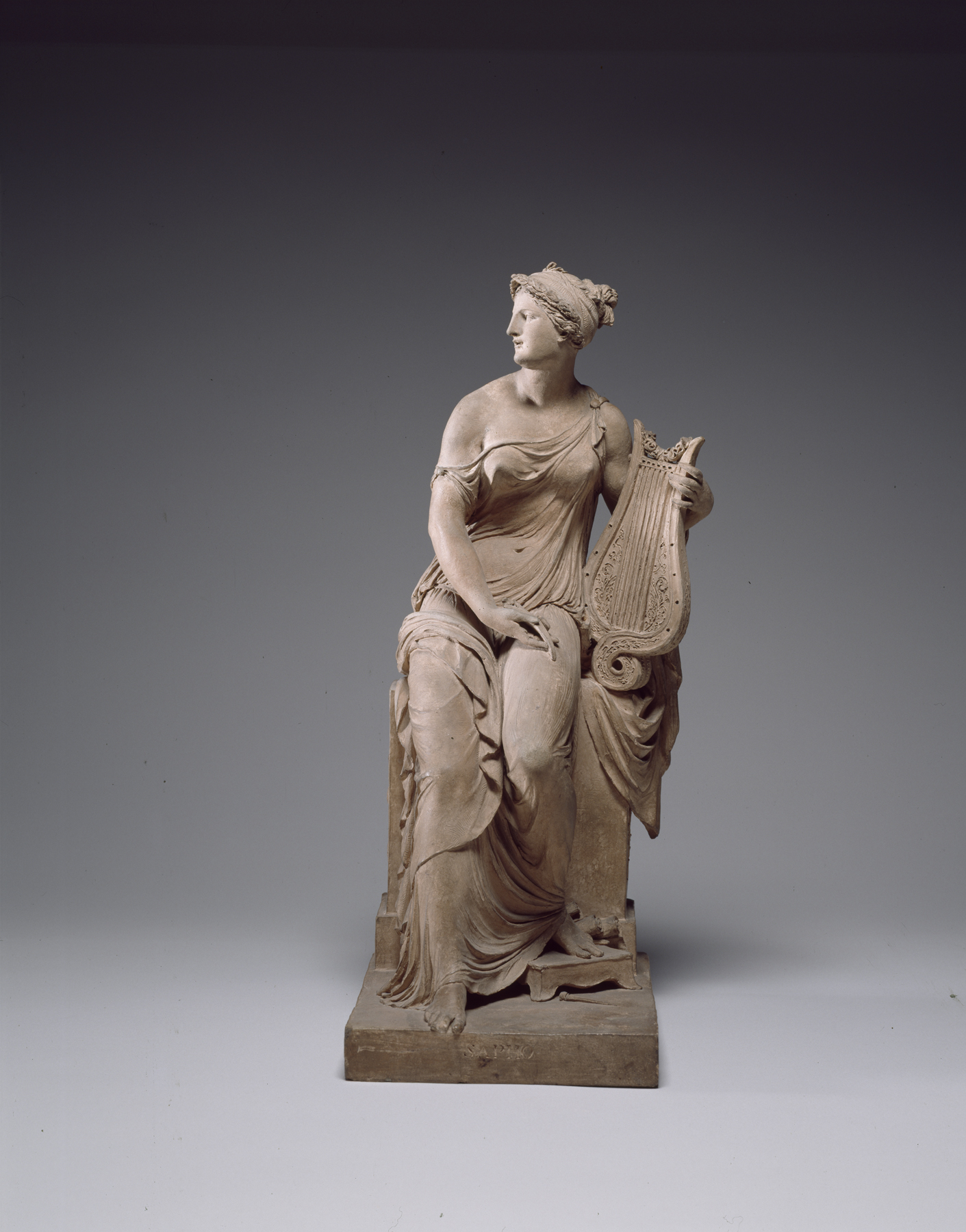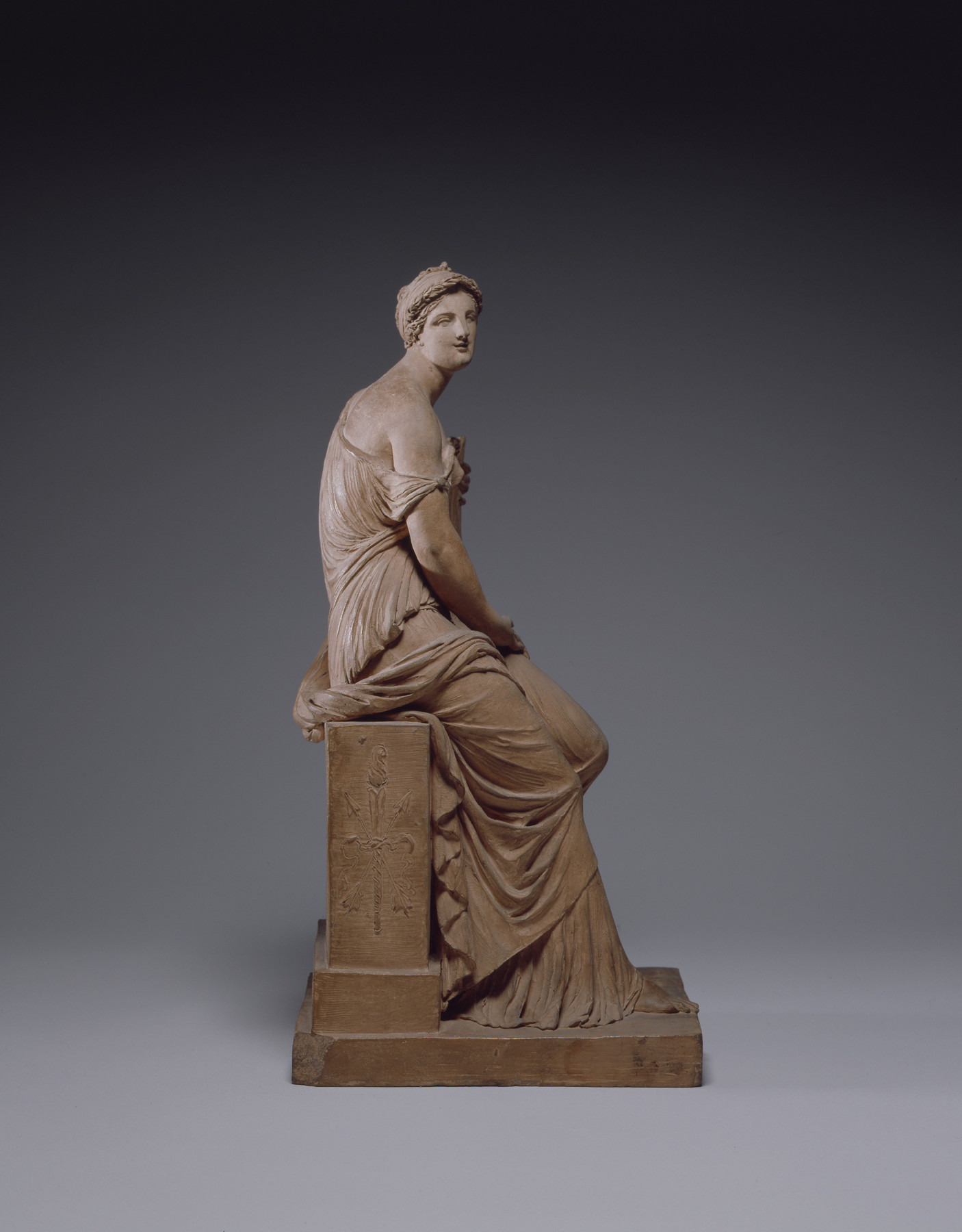Sappho (Seated Woman Holding a Lyre)
(18th and 19th Centuries )
Pierre-Nicolas Beauvallet was a draftsman and printmaker, as well as a sculptor. After the French Revolution he restored Medieval and Renaissance sculptures for the Musée National des Monuments Français, including the famous Fontaine de Diane. This statuette is the exact contemporary of one of his most celebrated works, but the exact reason for the terrecotta statue is unknown. This piece is made of beige clay covered with a brown slip. It captures Sappho just as she has stopped playing the lyre that she is holding. Her expression and appearance illustrate her inner turmoil as she has lost her love Phaon. Her hair is crowned with laurels and her elegant robe cascades down in folds across her body. Her physique is shown off by the clinging drapery, small breasted and robust hips. The fall of the folds reflect the Farnese "Flora", and presents a refinded Neoclassicism.
Inscription
Provenance
Provenance (from the French provenir, 'to come from/forth') is the chronology of the ownership, custody, or location of a historical object. Learn more about provenance at the Walters.
E. F. Bonaventure, New York [date and mode of acquisition unknown]; Henry Walters, Baltimore, 1910 [mode of acquisition unknown]; Walters Art Museum, 1931, by bequest.
Exhibitions
| 2004 | Playing with Fire: European Terracotta Models, 1740-1840 (Terres cuites européennes de 1750 á 1830). The Metropolitan Museum of Art, New York. |
Geographies
France (Place of Origin)
Measurements
H: 16 5/16 x W: 7 1/2 x D: 8 3/8 in. (41.4 x 19.1 x 21.3 cm)
Credit Line
Acquired by Henry Walters, 1910
Location in Museum
Not on view
Accession Number
In libraries, galleries, museums, and archives, an accession number is a unique identifier assigned to each object in the collection.
In libraries, galleries, museums, and archives, an accession number is a unique identifier assigned to each object in the collection.
27.372




